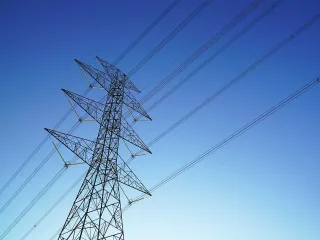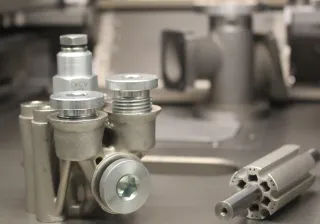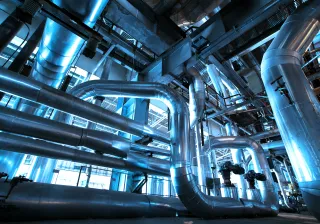VTT Technical Research Centre of Finland and the technology group Wärtsilä have completed a three-year project funded by Business Finland, which created new solutions for power plant noise emissions. New solutions can reduce a power plant's noise level by 10–20 decibels. In practice, this means a 90–99% reduction in noisefootprint.
Key highlights
Increased potential for decentralised power generation
90–99% reduction in power plant’s noisefootprint
Less insulation in the exhaust system
Increasing the use of renewable energy sources in energy production requires the availability of energy and reserve power sources close to residential areas. The noise level of a plant has a decisive influence on the location of the plant, its viability and the usability of the surrounding areas. New solutions in the acoustic design of a power plant increase the potential for decentralised power generation. This will enable more power plants to be located where electricity is used, i.e. close to residential areas.
Less insulation in the exhaust system
Successful acoustic design for a power plant is based on a balanced dimensioning of sound sources and attenuation. The magnitude of noise emissions and the non-disturbance of noise affect both the environment and the competitiveness of a company. The most significant sources of noise in a power plant are the ventilation of the power aggregate's engine, i.e. air intake and exhaust, and the cooling of the engine. The sound of the exhaust system is one of the most significant environmental noise components of a power plant.
'Traditionally, the exhaust system has been provided with individual components that reduce noise, especially at a certain frequency. Now, we considered the entire acoustic chain from the sound source to the recipient across the hearing zone. We also used the noise cancellation principle, where components attenuate each other based on the phasing of sound. At the same time, the need for insulating materials was reduced, making the components more durable and environmentally friendly. The same technologies can be utilised anywhere,' says Antti Hynninen, Senior Scientist at VTT.
New types of components with 3D printing
3D printing was used to implement the attenuation prototypes, which made it possible to produce completely new structures. This, together with new multi-physical simulation methods, allow the sounds of a plant to be pre-tuned to be non-disturbing.
'With the new solutions, we achieved quieter operations of up to 10–20 decibels at the power plant. This kind of decibel change in the everyday life of city-dwellers could mean attenuating the traffic noise coming through an open window to the home sofa by closing the windows and wearing earplugs. In the open air, this would be equivalent to moving a kilometre away from the noise source, such as a large outdoor concert arena,' Hynninen describes.
Solutions into use
It is possible to further reduce engine noise levels. Such projects could, for example, aim to teach engines to negotiate themselves to become silent. This could include applying methods such as machine learning, neural networks and smart sensing.
Local regulations and guidelines determine the limit values that a power plant to be built in an area must meet. In addition, the power plant must be a good neighbour so as not to disturb its surroundings. Wärtsilä has immediately implemented, tested and installed the solutions developed in the development project. This development work will continue in the future.







